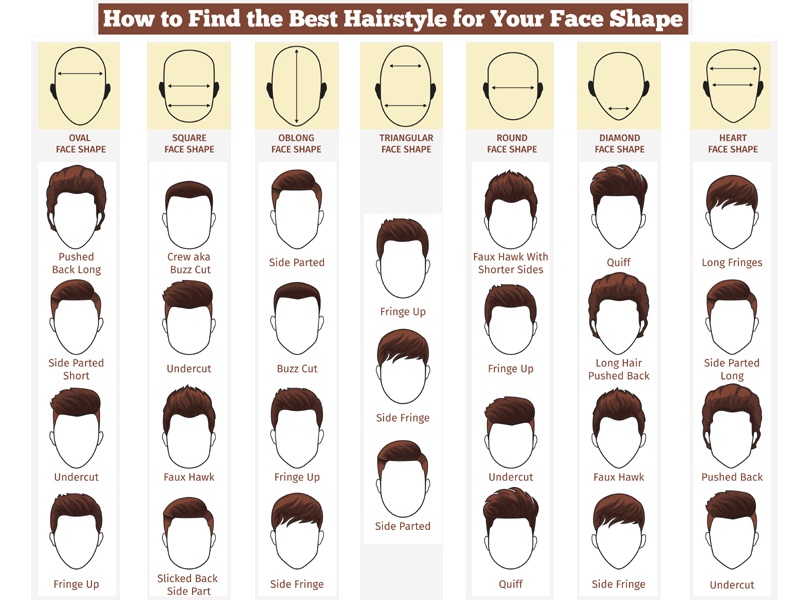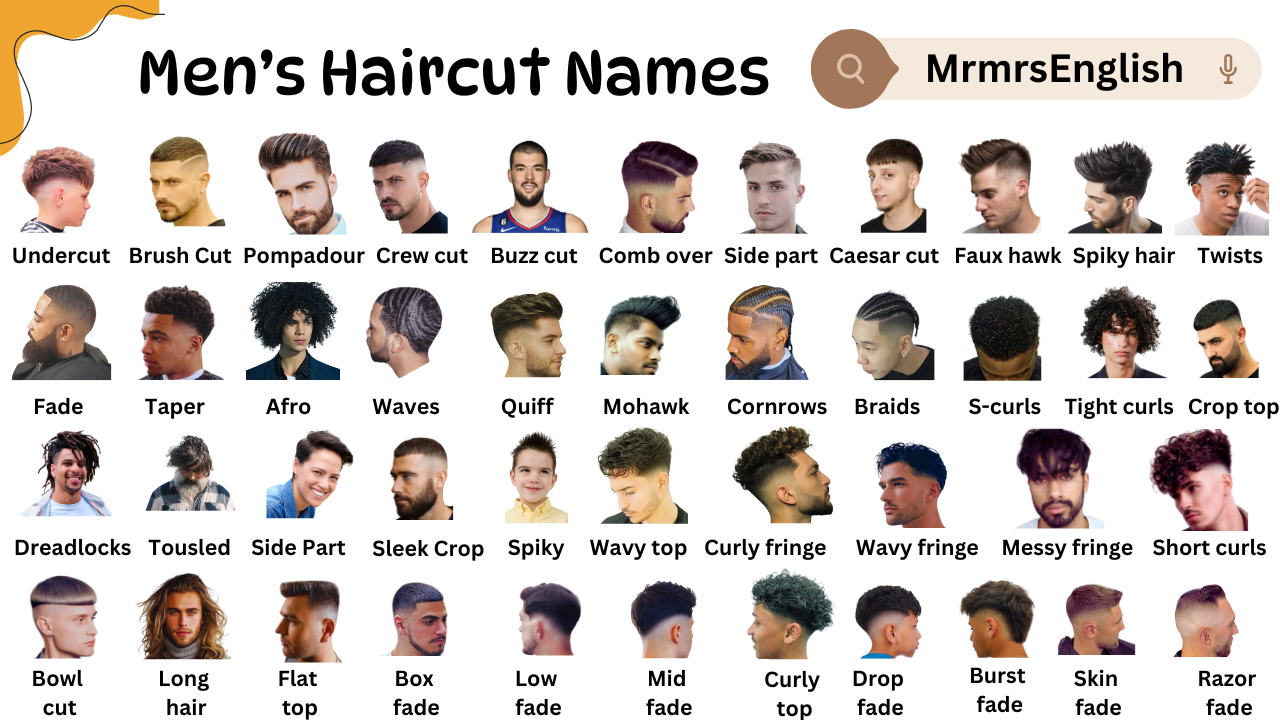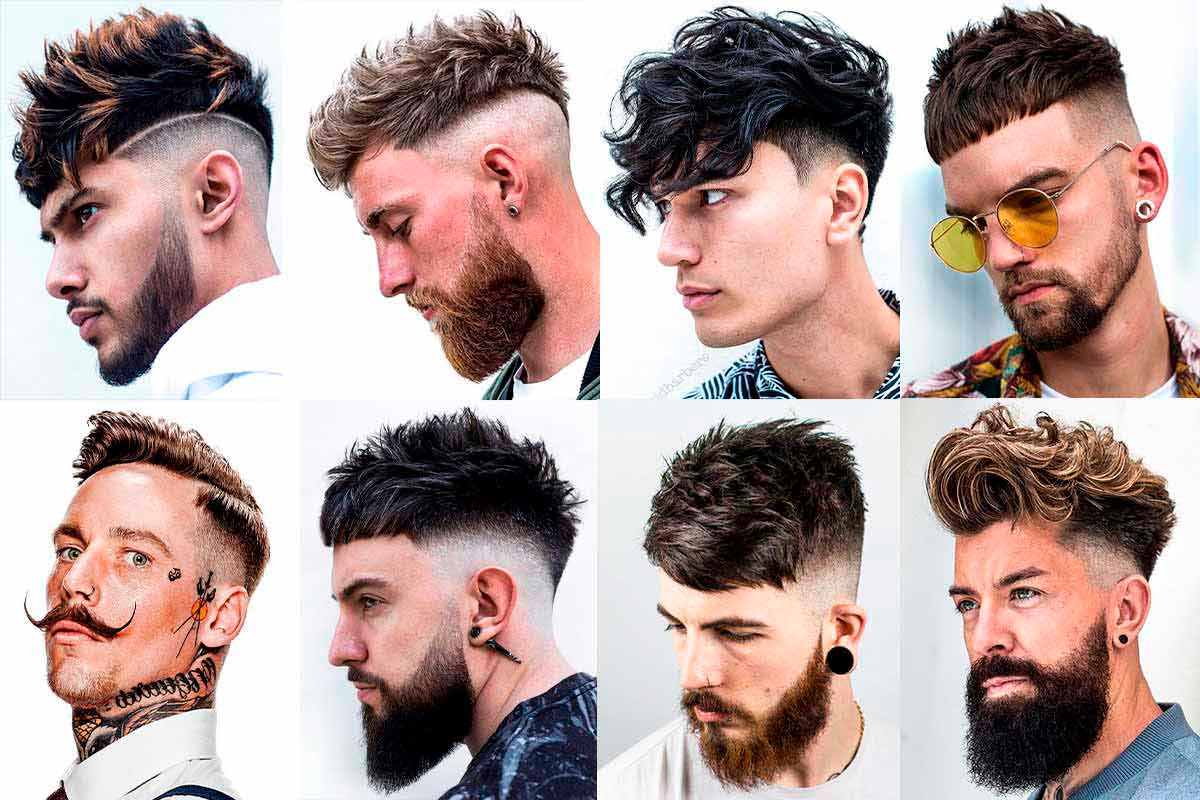What Type of Hairstyle Suits Me Men: A Comprehensive Guide to Optimal Hair Selection

The selection of an appropriate hairstyle constitutes a pivotal element of male grooming and personal presentation. Beyond mere aesthetics, a well-chosen style significantly influences how an individual is perceived, impacting confidence and conveying aspects of personality and professionalism. Understanding the multifaceted criteria that inform this decision is crucial for achieving an optimal appearance. This process involves a systematic analysis of individual characteristics, moving beyond fleeting trends to embrace styles that genuinely complement one’s unique features. The aim is to achieve a harmonious balance between facial structure, hair characteristics, lifestyle demands, and personal aesthetic preferences, culminating in a look that enhances natural attributes and projects a refined image.
I. The Foundation: Understanding Facial Geometry
The most critical factor in determining a suitable hairstyle is the individual’s face shape. Different facial contours necessitate varying approaches to hair design to create visual balance and proportion.
- Oval Face Shape: Considered the most versatile, an oval face is characterized by balanced proportions, with the forehead slightly wider than the chin and a gently rounded jawline. Individuals with this face shape can typically carry off a wide array of styles, from short and sharp to longer, flowing looks. The objective is often to maintain its natural balance without adding excessive height or width that could disrupt its inherent symmetry. Classic side partings, textured quiffs, or even buzz cuts can work effectively.
- Round Face Shape: A round face exhibits similar width and length, with soft, curved lines and a less defined jawline. The primary goal for this shape is to add length and angularity, thereby creating the illusion of a more elongated face. Styles that feature height on top, such as pompadours, quiffs, or textured crops with shorter sides, are highly recommended. Avoiding full, round styles or fringes that fall across the forehead is advisable, as these can accentuate the face’s circularity. Sharp side parts and faded sides can also contribute to a more defined look.
- Square Face Shape: Defined by a strong, angular jawline, broad forehead, and relatively equal width and length, a square face projects a robust and masculine appearance. While many styles suit this shape, softening the sharp angles or complementing them with equally strong lines are common strategies. Styles with some length on top, perhaps with a slight fringe or texture to break up the forehead, can be effective. Crew cuts, buzz cuts, or short, tight fades also work well, emphasizing the strong jawline. Avoiding excessive bulk on the sides is generally preferred to maintain a streamlined profile.
- Oblong/Rectangular Face Shape: Longer than it is wide, an oblong or rectangular face requires styles that add width to the sides and reduce height on top, preventing further elongation. Medium-length styles with volume on the sides, such as textured messy cuts or slightly longer fringes, can be beneficial. Avoiding extreme height on top or very short sides (like high fades) is crucial, as these can make the face appear even longer. Side partings and styles that sweep across the forehead can also help break up the vertical lines.
- Heart Face Shape: Characterized by a wider forehead, prominent cheekbones, and a narrower, pointed chin, a heart-shaped face benefits from styles that add volume or width around the jawline to balance the broader forehead. Medium-length hair, perhaps swept to the side or with a subtle fringe, can work well. Textured styles that are not overly short on the sides, maintaining some fullness around the lower face, are often recommended. Avoid styles that add significant width to the forehead area.
- Diamond Face Shape: A diamond face features a narrow forehead and jawline with the widest point at the cheekbones. The objective is to soften the cheekbones and add width to the forehead and chin. Styles that allow hair to fall onto the forehead, such as fringes or longer, textured cuts, can be effective. Maintaining some length on the sides and back, avoiding overly short or tight fades, can also help balance the facial proportions.
- Triangle Face Shape: Identified by a narrow forehead and a wider jawline, a Types Of Hair Extensions Celebrities Use triangle face benefits from styles that add volume and width to the upper part of the head. Longer, fuller styles on top, such as textured quiffs or fringes, can help broaden the appearance of the forehead. Shorter sides or faded cuts that do not add width to the jawline are typically preferred.
II. The Hair Itself: Type, Texture, and Growth Patterns
Beyond facial geometry, the inherent characteristics of an individual’s hair significantly dictate the feasibility and aesthetic of various styles.
-
Hair Type (Straight, Wavy, Curly, Coily):
- Straight Hair: This type is ideal for sharp lines, precise cuts, and sleek styles. It can hold definition well but may lack natural volume. Styles like classic side parts, slick-backs, or precise fades often look excellent.
- Wavy Hair: Offering natural texture and movement, wavy hair is versatile. It can be styled neatly or worn in more casual, textured looks. Quiffs, messy crops, or longer, flowing styles often work well, leveraging its natural body.
- Curly Hair: Curly hair possesses natural volume and character. Styles that embrace its curl pattern, such as textured crops, longer layered cuts, or even afros, are often most effective. Attempting to force curly hair into very sleek, straight styles can be challenging and damaging. Proper hydration and specific cutting techniques are essential to manage frizz and define curls.
- Coily Hair: Highly textured and often dense, coily hair benefits from styles that respect its natural shrinkage and unique growth pattern. Fades, close-cut styles, or longer, shaped styles that allow the coils to thrive are common choices. Maintenance often involves specialized products for moisture and definition.
-
Hair Texture (Fine, Medium, Thick/Dense):
- Fine Hair: Lacks natural volume and can appear flat. Styles that add texture, layers, or encourage lift at the roots are beneficial. Shorter to medium-length cuts, often with product for hold and volume, are effective.
- Medium Hair: The most common texture, offering good balance between volume and manageability. It adapts well to a wide range of styles.
- Thick/Dense Hair: Possesses significant volume and weight. It can be challenging to manage but offers great styling potential. Layering and texturizing techniques are often employed to reduce bulk and enhance movement. Undercuts, fades, or longer, controlled styles work well.
-
Hair Growth Patterns and Challenges:
- Cowlicks: Stubborn sections of hair that grow in a circular pattern, often making styling difficult. These can be worked with by allowing slightly more length in the area or cutting the hair very short.
- Receding Hairline: A common concern, styles can be chosen to minimize its appearance. Fringes, textured crops that sweep forward, or embracing shorter, faded styles can be effective strategies.
- Hair Direction: The natural direction of hair growth influences how it falls and responds to styling. Working with, rather than against, natural growth patterns often yields better, more sustainable results.
III. Lifestyle, Maintenance, and Personal Expression
The most aesthetically pleasing hairstyle will be impractical if it does not align with an individual’s daily life and commitment to maintenance.
-
Lifestyle Considerations:
- Profession: Corporate environments may necessitate more conservative, neatly groomed styles, while creative fields might allow for more expressive or longer looks.
- Activity Level: Active individuals, particularly those engaged in sports, might prefer shorter, low-maintenance styles that stay in place and are easy to wash.
- Daily Routine: The time Types Of Tied Up Hairstyles A Comprehensive Exploration available for styling each morning is a critical factor. Some styles require significant product application and meticulous shaping, while others are wash-and-go.
-
Maintenance Commitment:
- Trims: The frequency of haircuts is directly related to the style chosen. Shorter, precise cuts often require trims every 2-4 weeks to maintain their shape, while longer styles might only need attention every 6-8 weeks.
- Products: Many styles rely on specific hair products (pomades, waxes, gels, sprays) to achieve and maintain their look. The willingness to invest in and use these products is important.
- Personal Style and Trends: While understanding foundational principles is key, personal preference and overall aesthetic play a significant role. A hairstyle should ultimately reflect an individual’s personality and complement their wardrobe and general demeanor. Trends can be inspiring, but they should be adapted to suit personal features rather than blindly followed. A professional barber or stylist can offer invaluable guidance in merging current trends with individual suitability.
FAQs
Q1: How does facial geometry primarily influence hairstyle selection?
A1: Facial geometry is paramount as it dictates the proportions requiring balance. A suitable hairstyle works to either complement strong features or to create the illusion of ideal symmetry, such as adding length to a round face or width to an oblong one, thereby enhancing overall facial harmony.
Q2: Can hair texture significantly limit style options?
A2: Hair texture profoundly influences styling options. For instance, curly hair naturally holds volume and texture, making certain sleek styles challenging without extensive manipulation, whereas straight hair excels in sharp, defined cuts. Optimal styles leverage the hair’s natural characteristics for manageability and aesthetic appeal.
Q3: What role does an individual’s lifestyle play in choosing a practical hairstyle?
A3: Lifestyle dictates the practicality and maintenance requirements of a hairstyle. Professional demands, daily routines, and activity levels influence the selection of styles that are either low-maintenance and secure or allow for more elaborate grooming, ensuring the style remains appropriate and manageable.
Q4: Is it advisable to solely follow current hair trends when selecting a style?
A4: Solely following current hair trends is generally not advisable. While trends offer inspiration, the optimal approach involves adapting them to align with individual facial features, hair type, and personal style, ensuring the chosen look is both contemporary and genuinely flattering.
Q5: When should professional consultation be sought for hairstyle advice?
A5: Professional consultation with a barber or stylist is highly recommended when uncertainty exists regarding optimal hairstyle selection. Professionals possess the expertise to accurately assess facial geometry, hair characteristics, and lifestyle, providing tailored recommendations for the most suitable and flattering styles.
Tips
- Understand Facial Geometry: Conduct a thorough assessment of facial shape to identify its unique characteristics and proportional needs, forming the fundamental basis for style selection.
- Assess Hair’s Natural Characteristics: Evaluate hair type, texture, density, and growth patterns. Optimal styles work harmoniously with these inherent attributes, minimizing styling effort and maximizing natural appeal.
- Consider Daily Routine and Commitment: Reflect on the time and effort available for daily styling and regular trims. Choose a style that aligns with practical maintenance capabilities to ensure long-term satisfaction.
- Experiment Cautiously: While exploration is encouraged, implement changes incrementally or opt for styles that allow for gradual adjustments. Visualizing potential outcomes can mitigate undesirable results.
- Prioritize Professional Consultation: Seek advice from an experienced barber or stylist. Their expertise in hair science and aesthetics offers invaluable guidance in identifying styles that genuinely flatter individual features.
- Utilize Quality Hair Products: Invest in appropriate hair care and styling products. The right products can enhance a style’s longevity, manageability, and overall health.
- Maintain Regular Trims: Adhere to a consistent trimming schedule specific to the chosen style. Regular maintenance is crucial for preserving the shape, health, and intended aesthetic of the haircut.
Conclusion
The process of determining a suitable hairstyle is a highly personalized endeavor, requiring a thoughtful integration of various individual factors. It transcends mere adherence to fashion trends, emphasizing instead a scientific understanding of facial geometry, hair characteristics, and practical lifestyle considerations. By systematically evaluating these elements, an individual can select a style that not only enhances their physical appearance but also aligns with their personal identity and functional needs. A well-chosen hairstyle serves as a powerful tool for self-expression and significantly contributes to an individual’s confidence and overall presentation. This deliberate approach to hair selection represents an investment in one’s personal image, yielding benefits that extend far beyond superficial aesthetics.







More suggestion: Virat Kohli Hairstyle Price An In Depth Analysis Of Celebrity Grooming Costs